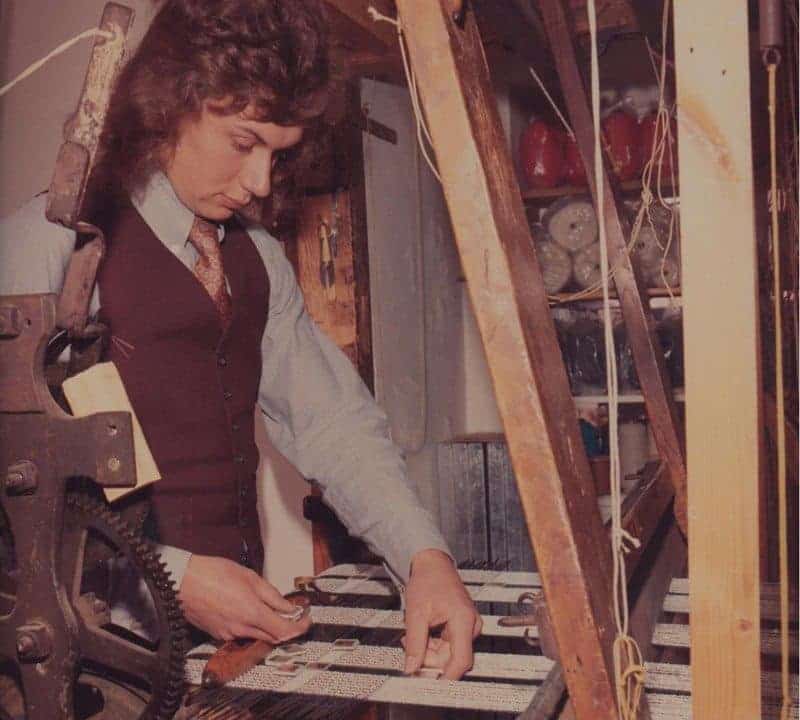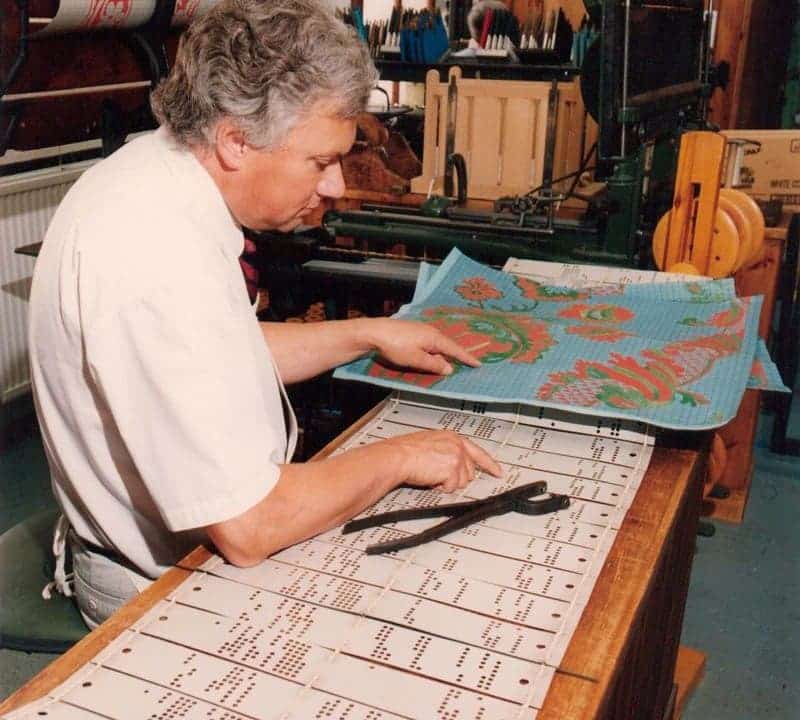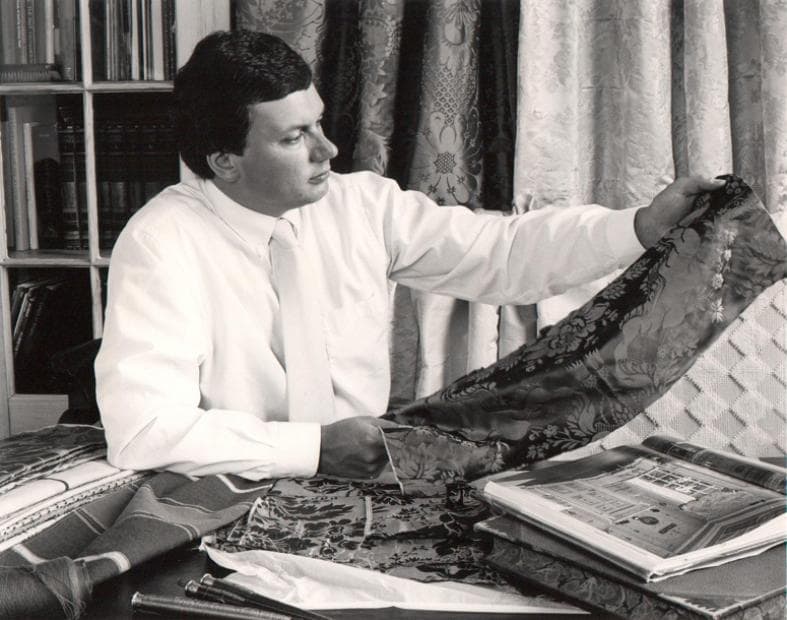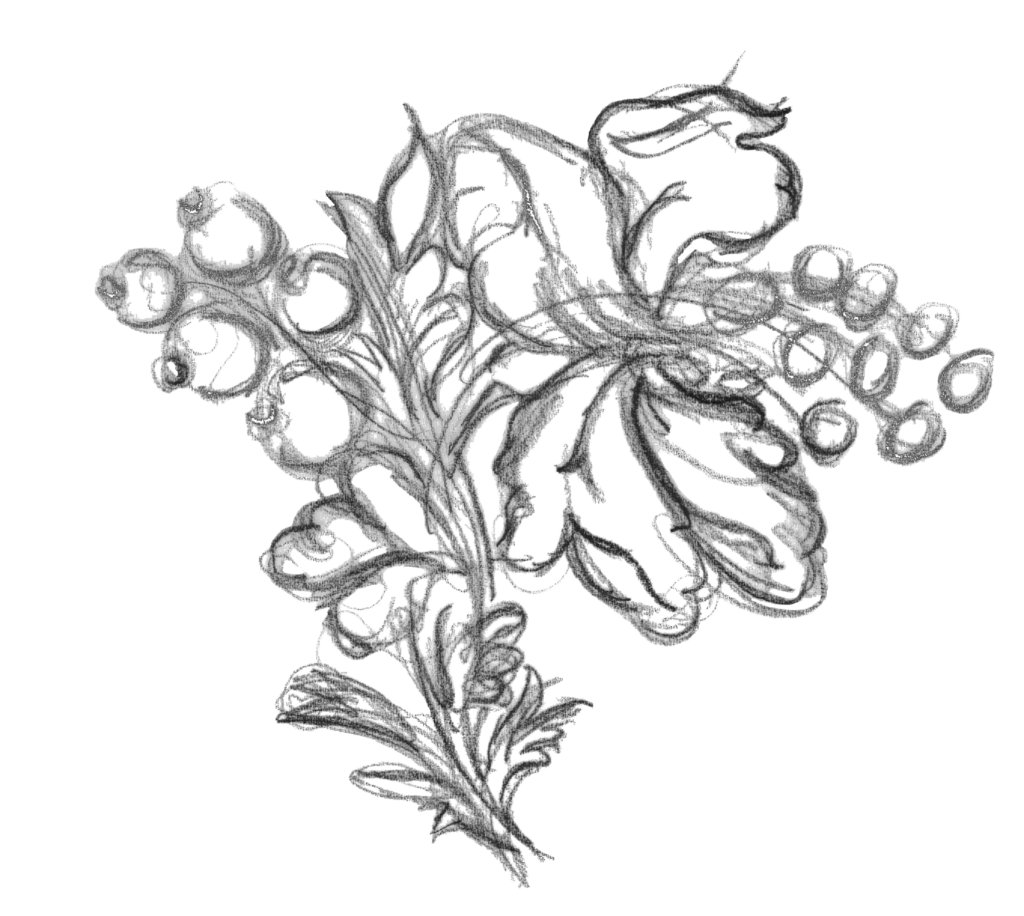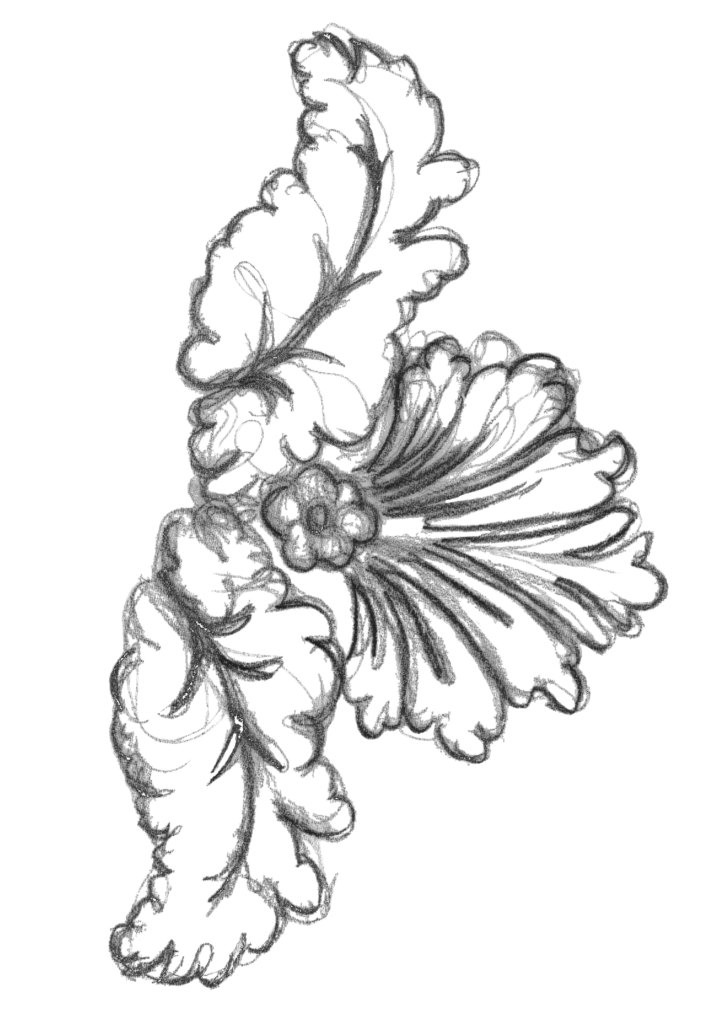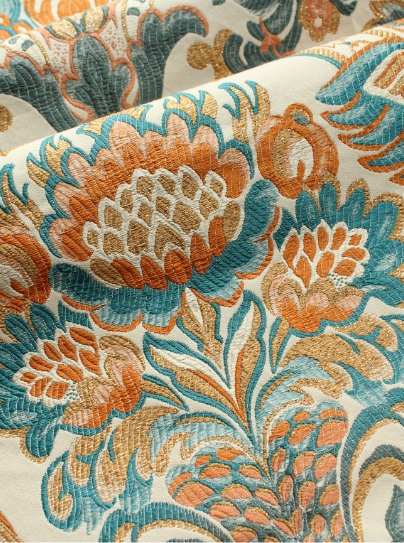Richard Humphries, 50 Years In Textiles
In 1966 Richard J Humphries was first employed as a design apprentice at Warner & Sons Ltd at New Mill, Braintree. It was to be a life-long career path of textile design and a passion to create the most complex and luxurious fabrics possible.
After a five year training period at Warner’s, Richard Humphries found himself redundant at just 20 years of age. An inspiring Uncle persuaded him to begin on his own and create his own name in textiles. With Richard’s understanding of not only the machines but also the market for the cloth he began his own set up in a redundant basement workspace at Ashburton Lodge, Sudbury and began weaving furnishing fabrics.
The speciality was to create custom made fabrics to order and it was not long before orders were forthcoming for hand woven cloths in unique styles and weaves. An early innovation was to weave window blinds encapsulating mirror squares in the structure. The decorative finish was specified for the newly built Penta Hotel in London in 1973 which boasted 902 bedrooms and cost £100million to build. The window blinds were designed by RJH and had to be flame proofed, which was quite an undertaking.
In 1975 Richard took on a redundant school at Castle Hedingham and called it deVere Mill. It was to become the home of Humphries Weaving for 30 years. The space and high ceilings allowed for Jacquard looms to be once again put back into working order. Royal commissions were to follow and the Queen’s Silver Jubilee gave the business an opportunity to gain in reputation as the State Gold Carriage was reupholstered along with the Green State Drawing Room at Buckingham Palace for the Royal Palaces. The National Trust and other major institutions followed and when a 56 inch wide brocatelle was ordered for the Speakers Bed in the Palace of Westminster, the greatest challenge was to recreate the loom for it. The result was to re-establish the ability to recreate such complex structures once again.
In 1985 all efforts in his field were rewarded when Richard received an MBE from the Queen for his services to the textile industry. It was a busy year when a proposal to build a working museum in Warner’s former Mill was approved and the decision to press on for a 1990 opening. This was to coincide with the terrible fire at Hampton Court Palace, which devastated the Kings Apartments. This provided the business with many orders for bespoke fabrics for the restoration. With the demand for fabric increasing, more loom building was needed to keep up with deliveries. With the planned increase in museum space the business was well placed for development.
The opening of the Working Silk Mill at New Mills by Chris Pattern CH Secretary of State for the environment in 1990 meant an increase in activity on all fronts. The weaving company had 18 month’s work booked in advance and the museum received 70,000 visitors in the first 12 months. This also meant an up-turn in staff levels rising to 23 employees. With ten looms at New Mills and a further six at deVere Mill the variety of cloths available gave the business a leading edge in custom cloth for decorators and designers. There was space at deVere mill to build a new dye house for specialist colours.
In 1992 a second Royal Palace fire took place at Windsor Castle where Richard had already spent years reweaving damask for several rooms. From this disaster came the opportunity to be involved in the restoration of the State Apartments. The success of the restoration led to developing a silk throwstering floor at deVere Mill to give a vertical manufacturing ability from raw silk to made-up product for retail. This activity was requiring attention on the two sites which were nine miles apart so there was a daily delivery from one to the other which included transport for employees.
By the mid-1990 the business was really at a very critical point where both sides of the business of tourism and fabric manufacturing were at full capacity. London wholesalers were taken on in order to relieve pressure on decorator cloth sales allowing Richard to concentrate more on the making of historic fabrics required. At this same time the silk market took a massive hit when China lowered its prices so low as to render all throwstering in the UK a non-viable activity. When the price reached half of what it was, the end of the making of silk thread for Richard and with his lease up for revision at New Mills it was time to condense the activity into deVere mill once more.
As the millennium turned, the planned restoration of Osborne House meant the firm had its greatest challenge to face. The Amber room at Osborne House required a most complex design damask on an extra wide harness requiring a treble Jacquard head on the loom. Although the business had the machine and equipment it would require Richard’s skills to rebuild the Jacquards, harness and loom before re-drafting and cutting the Jacquard cards to make the design. The whole project took over two years to complete the project which culminated in Richard meeting the Queen at the re-opening of the house.
With the growing success of the reputation of the firm the company now needed to move forward and seek investment for machinery upgrades. The looms would need replacements and new staff training would challenge the quest for modernisation. In 2004 a major decision taken was to move back to their original premises at Sudbury in Suffolk. Here was the opportunity to upgrade the firm’s weaving ability at Sudbury Silk Mills and invest in more efficient weaving. Here the looms were soon making new wall coverings for Windsor Castle and the National Trust. Modern decorating styles and designs were added to the extensive range of furnishings on offer. The “special, unusual and unique” were all taken on in making the Humphries brand synonymous with quality and attention to detail.
Today the work continuous to demand meticulous care when making custom fabrics and Richard hopes to pass on valuable skills to the company’s staff – Meet the Humphries Weaving team and learn a little more about the individuals. With a life-times collection of archive material, the collection provides a unique pool of textiles recording the entire history of the firm. With such a rich resource and wealth of knowledge his firm looks set to continue with future success.
